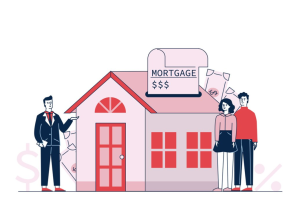Short-term financing, payday loans have become a popular option for those seeking quick cash to cover unexpected expenses. However, the often-misunderstood aspect of payday loans is the interest rates attached to them. In this comprehensive guide, we will delve into the concept of payday loan interest rates, demystifying the intricacies, and providing valuable advice on managing repayment effectively.
Understanding Payday Loan Interest Rates:
- The Basics of Payday Loan Interest: Payday loan interest rates differ from traditional loans. Instead of an annual percentage rate (APR), payday loans often present their interest rates as a fixed fee per every £100 borrowed. For example, a lender might charge £15 per £100 borrowed. Understanding this structure is crucial for borrowers to grasp the true cost of the loan.
- Comparing Payday Loan Interest Rates to Traditional Loans: While payday loan interest rates may seem high when expressed as a fixed fee per £100, comparing them directly to traditional loans with an APR can be misleading. Payday loans are short-term and unsecured, making the cost appear higher in the short run. It’s essential to recognize the difference in loan structures when evaluating the affordability of payday loans.
Managing Payday Loan Repayment Effectively:
- Borrow Only What You Can Repay: The foundation of effective repayment lies in borrowing only what you can comfortably repay on your next payday. Avoid the temptation to borrow more than necessary, as it can lead to a cycle of debt.Example: If your upcoming paycheck won’t cover the full loan amount and fees, consider borrowing a smaller amount to ensure manageable repayment.
- Create a Realistic Budget: Before taking out a payday loan, create a detailed budget that encompasses all your upcoming expenses, including the loan repayment. A clear overview of your financial situation will help you determine how much you can allocate for repayment without compromising essential needs.Solution: Utilize budgeting apps or tools to streamline the process and gain insights into your financial habits.
- Understand the Repayment Timeline: Payday loans are designed for short-term use, with repayment typically due on the next payday. Understanding this timeline is critical. Mark your repayment date on a calendar and set reminders to ensure timely payment.Tip: Align the loan repayment date with your payday to streamline the process and reduce the risk of missed payments.
- Consider Repayment Plans or Extensions: If you find yourself unable to repay the loan on the agreed-upon date, contact the lender immediately. Some lenders may offer repayment plans or extensions, providing flexibility in managing unexpected financial challenges.Advice: Be proactive in reaching out to your lender, as ignoring the issue can lead to additional fees and potential negative consequences.
- Avoid Rolling Over the Loan: Rolling over a payday loan involves extending the repayment period by paying only the interest and fees. While this may provide temporary relief, it often leads to increased costs and a prolonged debt cycle.Alternative: If faced with financial difficulties, explore other options, such as negotiating a repayment plan with the lender or seeking financial counseling.
Conclusion:
In conclusion, understanding payday loan interest rates is pivotal for making informed financial decisions. By grasping the unique structure of these rates and adopting effective repayment strategies, borrowers can utilise payday loans responsibly without falling into a cycle of debt. Remember, the key to successful payday loan management lies in careful planning, realistic budgeting, and open communication with the lender. Armed with this knowledge, borrowers can navigate the landscape of payday loans with confidence and financial empowerment.






